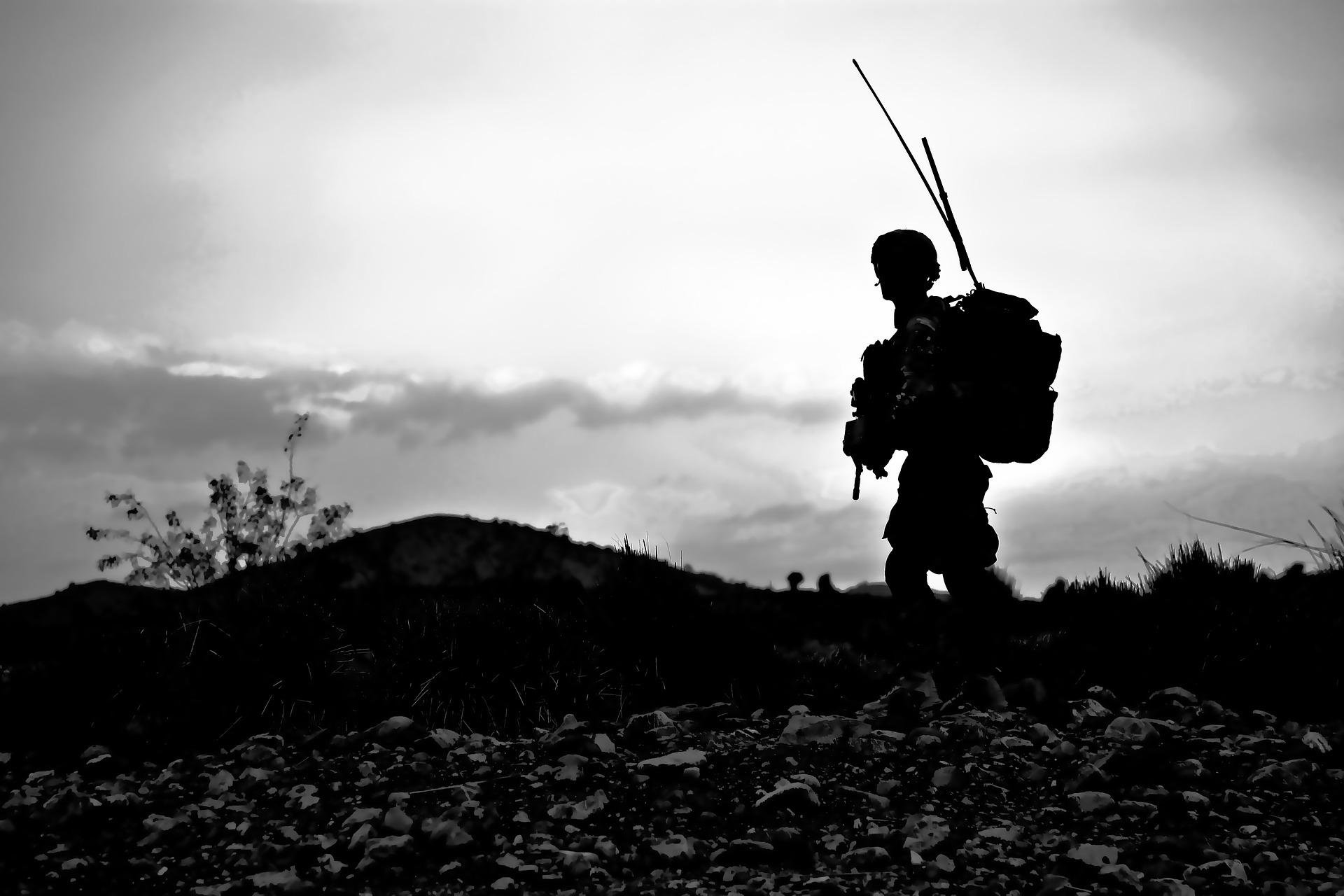Life and War Writing, Off- and Online
This article considers how war writing – the recording and sharing of stories by those who experience conflicts directly and indirectly, and who try to make sense of their personal and cultural impacts – as a subgenre of life writing has and has not changed in the social media age.

Image of soldier carrying communications gear silhouetted against a bright sky, on a rocky, hilly landscape with sparse vegetation by Amber Clay from Pixabay: https://pixabay.com/photos/soldier-military-uniform-armed-60762/.
This article on life and war writing, off- and online is comprised of the following analytical subsections: Historicity explains the authors cultural history frame; Offline to Online explores the ways past and present media have migrated between these interdependent worlds; Mediations considers how war writing in its various forms prefigures experiences and developing accounts; Violence examines this core element of conflict, moving beyond combat narratives to consider alternate and complementary perspectives; Lenses, Screens, and Datafication explores the interfaces historically applied to war narratives; Gatekeepers looks at barriers to, and potential pathways for, emerging life writers focusing on conflicts; Databases and Networks considers how these structures act as repositories of cultural memory, and how they may or may not become more fluid and open as a result of social media; and “Future” Wars poses questions about how online structures may or may not help humans to diffuse existential threats.
While the listings and visual and narrative prompts placed throughout the project site suggest that the reader engage with the material in the order suggested by the author, all of the sections can also be approached as stand-alone texts.
The author would particularly like to thank Adin Dobkin, Matt Gallagher, Lauren Katzenberg, and Rachel Kambury, who agreed to be interviewed for this project; extracts of these conversations are woven in to the subsequent sections.
The author would also like to thank the peer reviewers of this article, and in particular Dr. James Kitchen, who offered such thoughtful and constructive suggestions for how to improve the following, and colleagues at King’s College London and the Royal Military Academy Sandhurst for their expertise, enthusiasm, and support.
